Craniotomy is a preliminary surgical procedure necessarily performed to access the brain and proceed with further operations. It involves the cutting and opening of a portion of the skull in order to have access the brain. It is performed either in case of severe neurological or cerebral anomaly, or in case of traumatic as well as accidental injuries. Craniotomy is also performed to remove lodged foreign objects like iron rods, bullets, nails, etc.
The surgical removal of a bone flap or a portion of the skull to perform necessary operation on the brain is known as craniotomy. Post-operation, the bone flap is however fixed in position with the help of metal screws. Craniotomy involves carving out minute incisions or burrholes as well as significant incision known as keyholes to carry out necessary functions. The entire procedure is guided by endoscopes, stereostatic framing, as well as computer based imaging that helps the surgeons to:
Evaluation for ideal candidacy for craniotomy surgery is primarily important. The surgeons shall decide an ideal candidate if the individual:
Craniotomy is mostly performed to treat or remove brain tumors (malignant or benign). An average brain tumor surgery cost may range from $20,000 to $28,000. Apart from tumors, the surgery is performed for a number of other reasons, depending on which, craniotomy cost may range from $8000 to $20000. It may hinge on:
Treatment cost
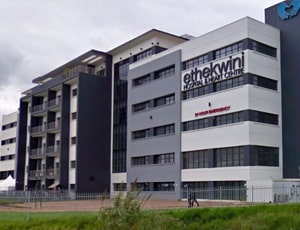
Apart from in-detail treatment procedures available, Lenmed Ethekwini Hospital and Heart Centre located in Durban, South Africa has a wide variety of facilities available for International Patients. Some of the facilities which are provided by them are Accommodation, Airport Transfer, Choice of Meals, Interpreter, SIM, TV inside room. Also listed below are some of the most prominent infrastructural details:
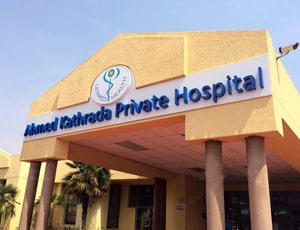
Apart from in-detail treatment procedures available, Lenmed Ahmed Kathrada Private Hospital located in Johannesburg, South Africa has a wide variety of facilities available for International Patients. Some of the facilities which are provided by them are Accommodation, Airport Transfer, Choice of Meals, Interpreter, SIM, TV inside room. Also listed below are some of the most prominent infrastructural details:
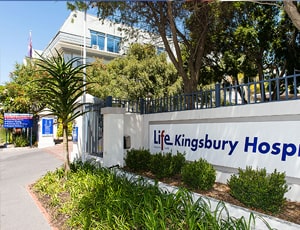
Apart from in-detail treatment procedures available, Life Kingsbury Hospital located in Cape Town, South Africa has a wide variety of facilities available for International Patients. Some of the facilities which are provided by them are Accommodation, Airport Transfer, Choice of Meals, Interpreter, SIM, TV inside room. Also listed below are some of the most prominent infrastructural details:


Types of Craniotomy in Sarvodaya Hospital and Research Centre and its associated cost
| Treatment Option | Approximate Cost Range (USD) | Approximate Cost Range (INR) |
|---|---|---|
| Overall Craniotomy Surgery | 5081 - 10138 | 416685 - 834850 |
| Extended Bifrontal Craniotomy | 3049 - 8133 | 249405 - 667436 |
| Supra-Orbital Craniotomy | 3564 - 7620 | 290516 - 623243 |
| Retro Sigmoid Craniotomy | 4561 - 9102 | 375594 - 750921 |
| Orbitozygomatic Craniotomy | 4567 - 9680 | 375393 - 792095 |
| Translabyrinthine Craniotomy | 4570 - 9639 | 374279 - 790088 |
| Pterional Craniotomy | 4070 - 8601 | 334168 - 707033 |
| Suboccipital Craniotomy | 4043 - 8643 | 333836 - 706407 |
DOCTORS IN 14 SPECIALITIES
FACILITIES & AMENITIES

Types of Craniotomy in Apollo Hospitals Bannerghatta and its associated cost
| Treatment Option | Approximate Cost Range (USD) | Approximate Cost Range (INR) |
|---|---|---|
| Overall Craniotomy Surgery | 5543 - 11464 | 454073 - 927892 |
| Extended Bifrontal Craniotomy | 3420 - 9131 | 272128 - 726759 |
| Supra-Orbital Craniotomy | 3946 - 8570 | 327598 - 687723 |
| Retro Sigmoid Craniotomy | 5150 - 9943 | 421737 - 822192 |
| Orbitozygomatic Craniotomy | 5124 - 10812 | 407867 - 892134 |
| Translabyrinthine Craniotomy | 5062 - 10587 | 422752 - 872784 |
| Pterional Craniotomy | 4510 - 9719 | 373788 - 791539 |
| Suboccipital Craniotomy | 4539 - 9668 | 376864 - 772623 |
DOCTORS IN 13 SPECIALITIES
FACILITIES & AMENITIES
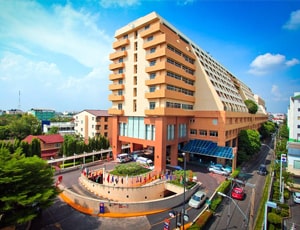
Types of Craniotomy in Vejthani Hospital and its associated cost
| Treatment Option | Approximate Cost Range (USD) | Approximate Cost Range (THB) |
|---|---|---|
| Overall Craniotomy Surgery | 12519 - 22082 | 444632 - 785198 |
| Extended Bifrontal Craniotomy | 9777 - 25243 | 349335 - 894751 |
| Supra-Orbital Craniotomy | 10340 - 22330 | 379840 - 811689 |
| Retro Sigmoid Craniotomy | 12205 - 24929 | 443367 - 893419 |
| Orbitozygomatic Craniotomy | 12387 - 24295 | 443263 - 892229 |
| Translabyrinthine Craniotomy | 12140 - 23598 | 433061 - 838809 |
| Pterional Craniotomy | 10954 - 22696 | 390499 - 796185 |
| Suboccipital Craniotomy | 11026 - 21049 | 404888 - 758466 |
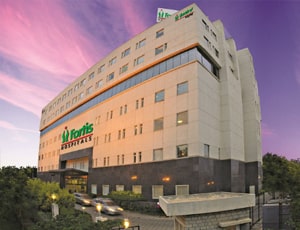
Types of Craniotomy in Fortis Hospital and its associated cost
| Treatment Option | Approximate Cost Range (USD) | Approximate Cost Range (INR) |
|---|---|---|
| Overall Craniotomy Surgery | 5081 - 10171 | 415726 - 836000 |
| Extended Bifrontal Craniotomy | 3052 - 8160 | 249323 - 664480 |
| Supra-Orbital Craniotomy | 3551 - 7648 | 291775 - 623075 |
| Retro Sigmoid Craniotomy | 4571 - 9142 | 375441 - 750082 |
| Orbitozygomatic Craniotomy | 4565 - 9605 | 375756 - 789783 |
| Translabyrinthine Craniotomy | 4583 - 9666 | 375858 - 790835 |
| Pterional Craniotomy | 4075 - 8620 | 332618 - 706542 |
| Suboccipital Craniotomy | 4066 - 8658 | 334240 - 704040 |
DOCTORS IN 12 SPECIALITIES
FACILITIES & AMENITIES

Types of Craniotomy in Zulekha Hospital Dubai and its associated cost
| Treatment Option | Approximate Cost Range (USD) | Approximate Cost Range (AED) |
|---|---|---|
| Overall Craniotomy Surgery | 15425 - 28706 | 56346 - 102603 |
| Extended Bifrontal Craniotomy | 10721 - 27813 | 39598 - 98383 |
| Supra-Orbital Craniotomy | 11542 - 24304 | 41750 - 91089 |
| Retro Sigmoid Craniotomy | 13721 - 27308 | 50486 - 101049 |
| Orbitozygomatic Craniotomy | 13459 - 27790 | 50799 - 98613 |
| Translabyrinthine Craniotomy | 13381 - 28610 | 49841 - 105383 |
| Pterional Craniotomy | 12423 - 26342 | 44412 - 100853 |
| Suboccipital Craniotomy | 12471 - 25001 | 45638 - 95171 |
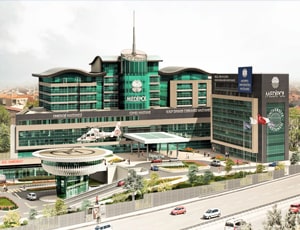
Types of Craniotomy in Medipol Mega University Hospital and its associated cost
| Treatment Option | Approximate Cost Range (USD) | Approximate Cost Range (TRY) |
|---|---|---|
| Overall Craniotomy Surgery | 14880 - 18800 | 444743 - 576507 |
| Extended Bifrontal Craniotomy | 9016 - 19459 | 276484 - 567098 |
| Supra-Orbital Craniotomy | 9437 - 16652 | 288885 - 518413 |
| Retro Sigmoid Craniotomy | 11277 - 19098 | 342493 - 586204 |
| Orbitozygomatic Craniotomy | 11120 - 18511 | 345666 - 568457 |
| Translabyrinthine Craniotomy | 11199 - 18000 | 343764 - 536589 |
| Pterional Craniotomy | 10069 - 16851 | 304753 - 518804 |
| Suboccipital Craniotomy | 10137 - 15761 | 299728 - 479347 |

Types of Craniotomy in HCG Kalinga Rao Road and its associated cost
| Treatment Option | Approximate Cost Range (USD) | Approximate Cost Range (INR) |
|---|---|---|
| Overall Craniotomy Surgery | 5063 - 10177 | 414941 - 832322 |
| Extended Bifrontal Craniotomy | 3054 - 8142 | 250334 - 664428 |
| Supra-Orbital Craniotomy | 3541 - 7625 | 292149 - 625311 |
| Retro Sigmoid Craniotomy | 4576 - 9121 | 375111 - 751402 |
| Orbitozygomatic Craniotomy | 4556 - 9687 | 374373 - 794277 |
| Translabyrinthine Craniotomy | 4548 - 9602 | 376207 - 792385 |
| Pterional Craniotomy | 4074 - 8667 | 334165 - 704293 |
| Suboccipital Craniotomy | 4044 - 8621 | 331728 - 704676 |

Types of Craniotomy in Zulekha Hospital Sharjah and its associated cost
| Treatment Option | Approximate Cost Range (USD) | Approximate Cost Range (AED) |
|---|---|---|
| Overall Craniotomy Surgery | 15091 - 28645 | 56626 - 102381 |
| Extended Bifrontal Craniotomy | 11093 - 27286 | 39272 - 101823 |
| Supra-Orbital Craniotomy | 11828 - 24608 | 42422 - 89575 |
| Retro Sigmoid Craniotomy | 13546 - 27010 | 48994 - 97772 |
| Orbitozygomatic Craniotomy | 13439 - 26931 | 50769 - 98755 |
| Translabyrinthine Craniotomy | 13784 - 28077 | 50166 - 103627 |
| Pterional Craniotomy | 12280 - 26860 | 45411 - 97895 |
| Suboccipital Craniotomy | 12546 - 25020 | 44467 - 91563 |
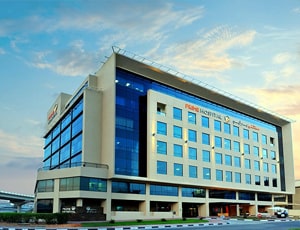
Types of Craniotomy in Prime Hospital and its associated cost
| Treatment Option | Approximate Cost Range (USD) | Approximate Cost Range (AED) |
|---|---|---|
| Overall Craniotomy Surgery | 15031 - 27737 | 56263 - 106132 |
| Extended Bifrontal Craniotomy | 10687 - 27232 | 40604 - 100516 |
| Supra-Orbital Craniotomy | 11543 - 23989 | 42629 - 89043 |
| Retro Sigmoid Craniotomy | 13544 - 26654 | 50437 - 100508 |
| Orbitozygomatic Craniotomy | 13884 - 26799 | 50607 - 101327 |
| Translabyrinthine Craniotomy | 13820 - 28312 | 48929 - 104010 |
| Pterional Craniotomy | 12161 - 27423 | 44534 - 98491 |
| Suboccipital Craniotomy | 12333 - 25804 | 46174 - 92732 |
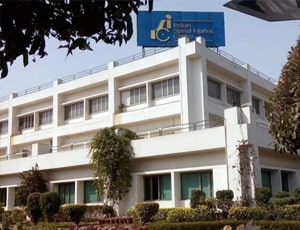
Types of Craniotomy in Indian Spinal Injuries Centre and its associated cost
| Treatment Option | Approximate Cost Range (USD) | Approximate Cost Range (INR) |
|---|---|---|
| Overall Craniotomy Surgery | 5079 - 10103 | 417048 - 834640 |
| Extended Bifrontal Craniotomy | 3050 - 8158 | 250523 - 667754 |
| Supra-Orbital Craniotomy | 3564 - 7641 | 291571 - 621395 |
| Retro Sigmoid Craniotomy | 4586 - 9142 | 375619 - 747112 |
| Orbitozygomatic Craniotomy | 4585 - 9604 | 375134 - 788578 |
| Translabyrinthine Craniotomy | 4546 - 9617 | 376296 - 791477 |
| Pterional Craniotomy | 4064 - 8625 | 334310 - 710524 |
| Suboccipital Craniotomy | 4063 - 8637 | 331861 - 710414 |
DOCTORS IN 2 SPECIALITIES
FACILITIES & AMENITIES
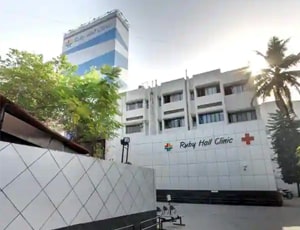
Types of Craniotomy in Ruby Hall Clinic and its associated cost
| Treatment Option | Approximate Cost Range (USD) | Approximate Cost Range (INR) |
|---|---|---|
| Overall Craniotomy Surgery | 4612 - 9482 | 387305 - 770753 |
| Extended Bifrontal Craniotomy | 2822 - 7522 | 231021 - 605696 |
| Supra-Orbital Craniotomy | 3279 - 7065 | 266437 - 582108 |
| Retro Sigmoid Craniotomy | 4200 - 8369 | 340624 - 697371 |
| Orbitozygomatic Craniotomy | 4234 - 8913 | 344902 - 734526 |
| Translabyrinthine Craniotomy | 4198 - 8830 | 345093 - 734010 |
| Pterional Craniotomy | 3694 - 7934 | 304608 - 648580 |
| Suboccipital Craniotomy | 3792 - 8074 | 310705 - 643718 |
DOCTORS IN 13 SPECIALITIES
FACILITIES & AMENITIES
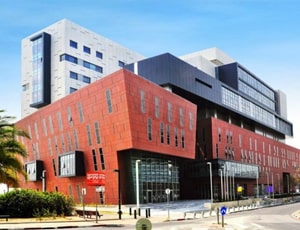
Assuta Hospital located in Tel-Aviv, Israel is accredited by JCI. Also listed below are some of the most prominent infrastructural details:
A craniotomy involves surgically removing a portion of the skull to access the brain. During this procedure, specialized instruments are used to extract a section of bone, known as the bone flap. This bone flap is temporarily removed and reattached.
Some craniotomy procedures incorporate computer and imaging technologies, such as magnetic resonance imaging (MRI) or computerized tomography (CT) scans, to accurately target the specific brain area needing treatment. This advanced technique may involve the use of a frame fixed to the skull or a frameless system with surface markers or landmarks on the scalp. When these imaging methods are used in conjunction with the craniotomy, the procedure is referred to as a stereotactic craniotomy.
After the craniotomy procedure, patients are typically transferred to either a recovery room for initial observation or directly to the intensive care unit (ICU) for close monitoring. In the ICU, medications may be administered to reduce brain swelling, and vital signs like blood pressure, pulse, and breathing are closely monitored until stable. Once patients regain alertness and their vital signs stabilize, they may transition to a neurosurgical nursing unit within the hospital for further recovery, where they will stay for several days. During this time, patients receive frequent neurological assessments to evaluate brain function, including responsiveness to commands, pupil reactions, and strength testing of limbs. The head may be elevated to reduce facial and head swelling, and patients are encouraged to gradually increase mobility with assistance as needed, under the guidance of medical staff and possibly a physical therapist.
Following discharge from the hospital, patients are advised to keep the incision clean and dry, following specific bathing instructions provided by their doctor. Any stitches or surgical staples are typically removed during a follow-up office visit, and patients may opt to wear a loose turban or hat to protect the healing incision. Pain management is important, with recommended pain relievers used cautiously to avoid complications like bleeding. Patients are also instructed to continue breathing exercises to prevent lung infections and to gradually increase physical activity as tolerated, understanding that it may take several weeks to fully regain energy and strength. Additionally, they are advised to avoid exposure to respiratory infections and irritants like tobacco smoke to promote optimal recovery.
Ask your healthcare adviser for the best multiple options and choose the one that meets your expectations
The Craniotomy package cost in South Africa varies from one hospital to another and may offer different benefits. There are many hospital that cover the cost of pre-surgical investigations of the patient in the treatment package. The Craniotomy procedure in South Africa includes the fees of the surgeon, hospitalization and anesthesia as well. There are many things that may increase the cost of Craniotomy in South Africa, including prolonged hospital stay and complications after the procedure.
There are several best hospitals for Craniotomy in South Africa. Some of the best hospitals for Craniotomy in South Africa include the following:
After Craniotomy in South Africa, the patient is supposed to stay in guest house for another 28 days. This duration of stay is recommended to complete all the necessary follow-ups and control tests to ensure that the surgery was successful.
There are certain expenses additional to the Craniotomy cost that the patient may have to pay for. These are the chanrges for daily meals and hotel stay outside the hospital. The per day extra expenses in South Africa per person are about USD 50 per person.
Craniotomy in South Africa is offered in almost all metropolitan cities, including the following:
The patient is supposed to stay at the hospital for about 5 days after Craniotomy for monitoring and care. The patient is subjected to several biochemistry and radiological scans to see that everything is okay and the recovery is on track. After making sure that patient is clinically stable, discharge is planned.
The average rating for Craniotomy hospitals in South Africa is 2.9. This rating is automatically calculated on the basis of several parameters such as the infrastructure of the hospital, quality of services, nursing support and other services.
There are more than 3 hospitals that offer Craniotomy in South Africa. Such hospitals have the required infrastructure and a dedicated unit where patients can be treated. These hospitals comply with all the rules and regulations as dictated by the regulatory bodies and medical association in South Africa
Some of the best doctors for Craniotomy in South Africa are: